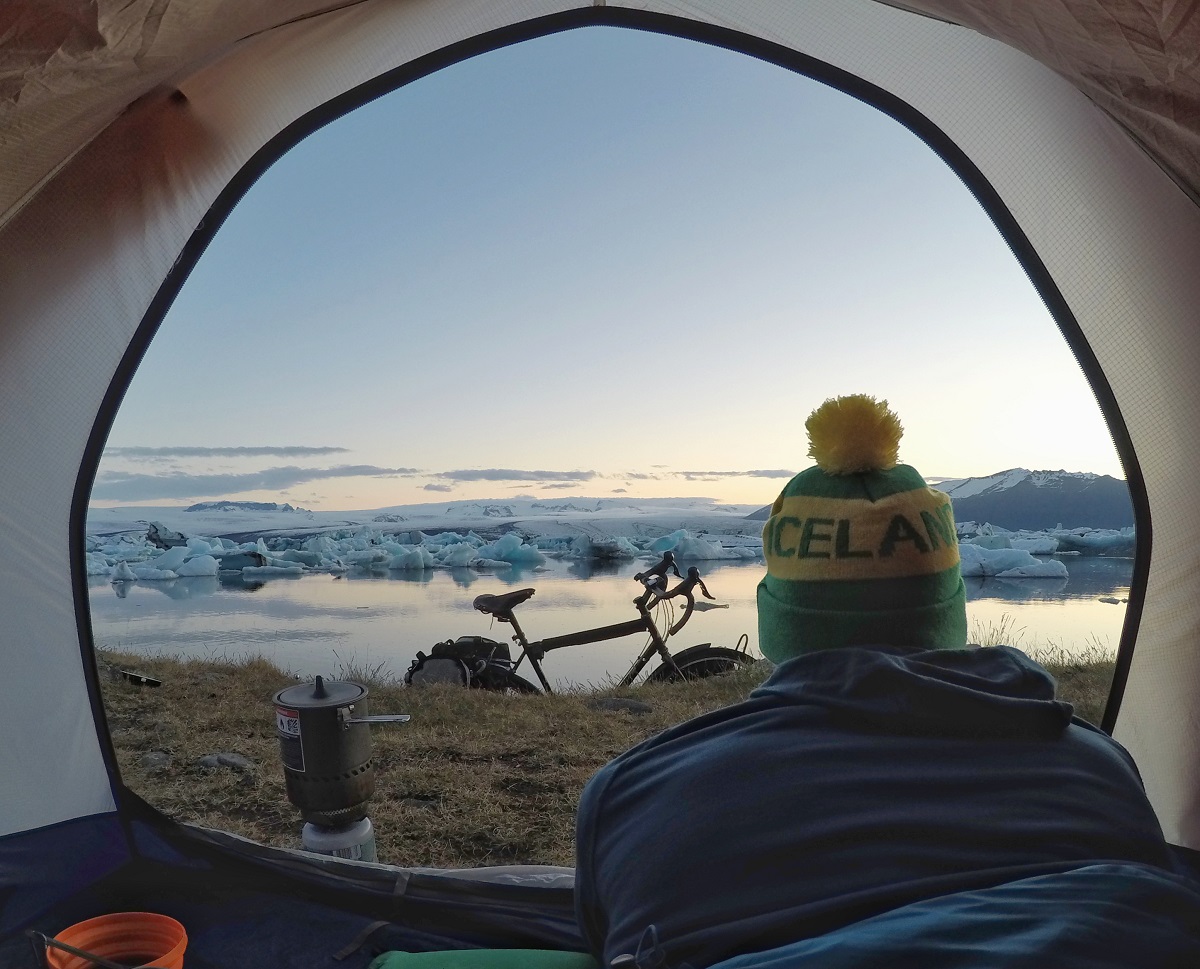Top 10 Bicycle Camping Tips
Camping by bicycle can be daunting, but it’s also one of the most rewarding experiences of any bike tour.
For folks who are new to camping, or those who’d like a refresher, we’ve compiled a list of ten camping tips for touring cyclists. These tips are organized into four basic categories: shelter, water, food, and safety.
1. Bring a Good Tent
The tent for your bike tour should be waterproof, free of holes, and as light and small as possible. If the one in your basement isn’t up to the challenge, purchase a new one. Remember, this will be your home for the next week/month, so choose something that will keep you and/or your cycling partner(s) warm, dry, and safe. Check out our favorite shelter option, here.
2. Clothing Shelters You, Too!
Wearing the right gear will increase your camping comfort. Pack layers that are quick-drying and warm enough for nighttime temps.
3. Carry Extra Water
For a touring cyclist, drinkable water is the most basic need. It’s always better to have too much water than too little, even when you’d rather lighten your load. When you’re heading to your campsite, carry enough water for drinking as well as cooking, and for hydrating the next morning when you wake up. For me, that’s between 2 and 3 liters of water.
4. Call Ahead
If you plan to camp at a site with potable water, it’s best to call ahead and make sure the water is still available. Sometimes wells dry up or certain amenities are closed without warning. If you can’t call ahead, pack a little extra … just in case.
5. To Cook or Not to Cook?
This may surprise you, but it’s not always necessary to carry a cook stove on your bike tour. I’ve pedaled and camped a combined 7,000 miles without one. Whether or not you require a stove depends on your route, budget, dietary needs, and personal preference. (I’ve gone a long way on a loaf of bread, a jar of peanut butter, some jerky, and a bag of baby carrots… no water-boiling necessary!)
6. Carry Extra Snacks
As with water, it’s better to have too much food than too little. Keep a couple of protein bars or other energy-packed snacks tucked away in case you run out of all other food sources.
7. Know Before You Go
Take the time to research the campgrounds along your route. Are they at higher elevations, with very cold nights? Is there wildlife present? Will you need to provide your own “bear safe container” in which to store your food? The more research you do ahead of time, the better you’ll feel sleeping under the stars.

8. Let There be Light!
Pack at least two light sources, for example, a headlamp and a handheld flashlight. Being able to see your surroundings at night is a matter of safety, so pack extra batteries and always have a backup light source if one should fail.
9. In Case of Emergency
Be sure to carry a working cell phone, radio transmitter, GPS beacon, or other signaling device in case you need to call for help. A small first aid kit is also essential.
10. Practice, Practice, Practice
As you’re preparing for a bike tour, nothing is more helpful (or fun) than a backyard campout. Long before you depart on your big adventure, set up a makeshift campsite near your home. Practice setting up your tent, using your cookstove, and sleeping outside. You’ll learn which pieces of gear are essential, and which ones you can leave at home.

